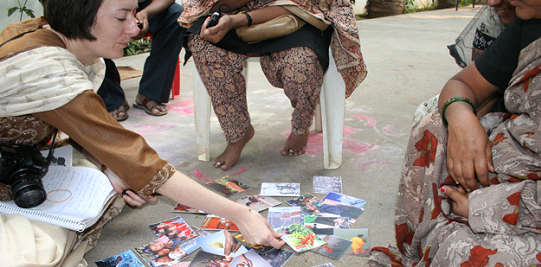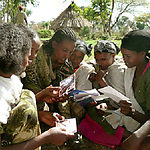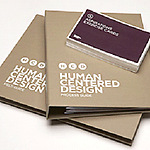Where does innovation come from?
The HCD Toolkit is developed to help international staff and volunteers understand a community’s needs in new ways, find innovative solutions to meet those needs, and deliver solutions with financial sustainability in mind.For instance: in agriculture, innovation often comes from scientists, but not always effectively. IDE and IDEO collaborated to create the Human-Centered Design Toolkit to help organisations that work in agriculture to better listen to farmers and better translate their experience and expertise into new design solutions. The kit offers new tools and techniques to ensure that farmers’ needs are at the heart of design. Aspiration cards are one of the tools in the kit. These cards feature an assortment of diverse images that help farmers think about what they want out of life and inspire them to talk about their lives in new ways. For IDE, learning about the details of poor farmers’ daily lives—for example, the unexpected importance of gender roles in appropriate design—was critical to helping the organisation develop technology that would meet farmers’ needs. Developed for NGOs and social enterprises that work with impoverished communities in Africa, Asia, and Latin America, the HDC free kit, is available for download on the HDC-website. It walks users through the human-centered design process and supports them in activities such as building listening skills, running workshops, and implementing ideas. The process has led to innovations such as the HeartStart defibrillator, CleanWell natural antibacterial products, and the Blood Donor System for the Red Cross—all of which have enhanced the lives of millions of people.
Why is this a good example of sustainist design?
The toolkit and the experiences that are shared by its users create a common language around designing for social impact. The entire body of work is available to all via free downloads and the published cases inspire others. In sum, it enables the generation and sharing of many more good solutions to come.
Sources / relevant weblinks:
gatesfoundation.org
ideo


